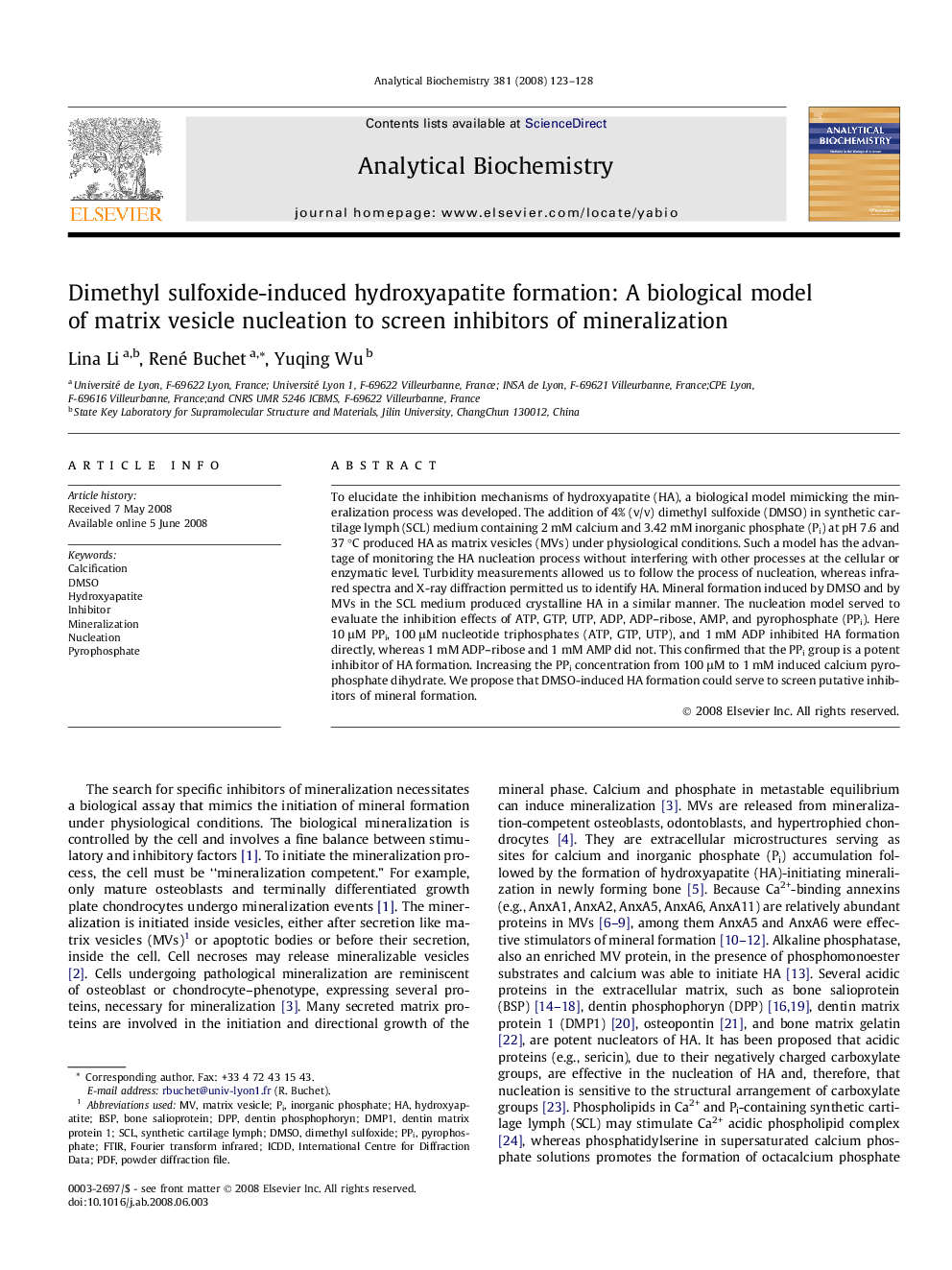| Article ID | Journal | Published Year | Pages | File Type |
|---|---|---|---|---|
| 1175247 | Analytical Biochemistry | 2008 | 6 Pages |
Abstract
To elucidate the inhibition mechanisms of hydroxyapatite (HA), a biological model mimicking the mineralization process was developed. The addition of 4% (v/v) dimethyl sulfoxide (DMSO) in synthetic cartilage lymph (SCL) medium containing 2 mM calcium and 3.42 mM inorganic phosphate (Pi) at pH 7.6 and 37 °C produced HA as matrix vesicles (MVs) under physiological conditions. Such a model has the advantage of monitoring the HA nucleation process without interfering with other processes at the cellular or enzymatic level. Turbidity measurements allowed us to follow the process of nucleation, whereas infrared spectra and X-ray diffraction permitted us to identify HA. Mineral formation induced by DMSO and by MVs in the SCL medium produced crystalline HA in a similar manner. The nucleation model served to evaluate the inhibition effects of ATP, GTP, UTP, ADP, ADP-ribose, AMP, and pyrophosphate (PPi). Here 10 μM PPi, 100 μM nucleotide triphosphates (ATP, GTP, UTP), and 1 mM ADP inhibited HA formation directly, whereas 1 mM ADP-ribose and 1 mM AMP did not. This confirmed that the PPi group is a potent inhibitor of HA formation. Increasing the PPi concentration from 100 μM to 1 mM induced calcium pyrophosphate dihydrate. We propose that DMSO-induced HA formation could serve to screen putative inhibitors of mineral formation.
Related Topics
Physical Sciences and Engineering
Chemistry
Analytical Chemistry
Authors
Lina Li, René Buchet, Yuqing Wu,
